The E minor chord, often written as Em chord, is a foundational chord for guitarists. Its melancholic yet versatile sound makes it incredibly common in countless songs across genres. If you’re just starting your guitar journey, you’ll be happy to know the Em chord is also one of the easiest minor chords to learn! This guide will show you exactly how to play the Em chord, master it with effective practice tips, and understand its place in music.
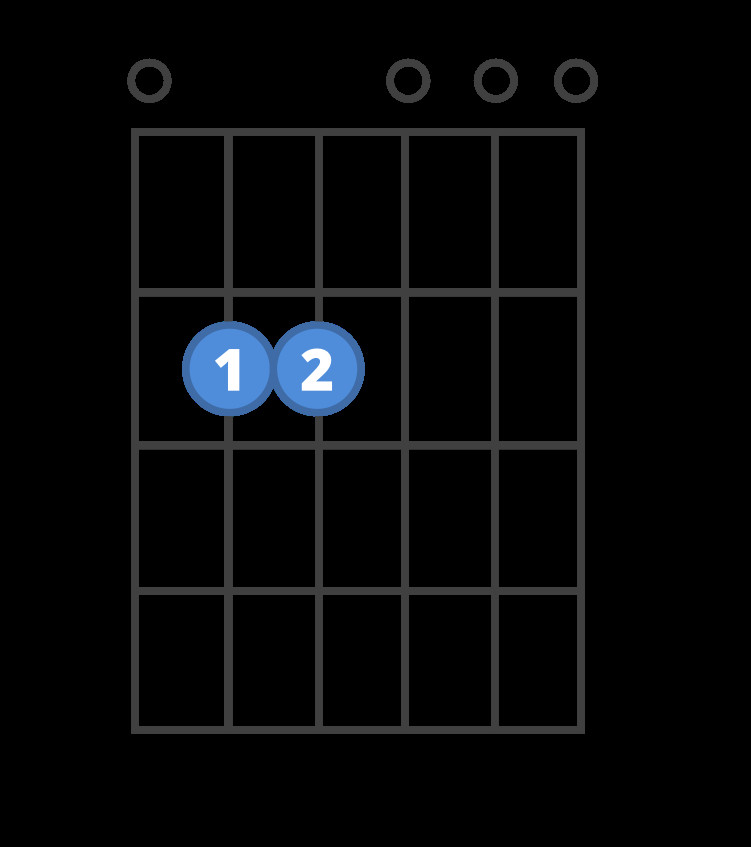 Chord diagram for the Em guitar chord.
Chord diagram for the Em guitar chord.
Understanding the E Minor Chord
Before diving into finger placement, let’s briefly touch upon what makes the Em chord unique. In music theory, a minor chord generally has a darker, sadder, or more reflective quality compared to major chords, which sound brighter and happier. The E minor chord embodies this characteristic, offering a rich, full sound that is both simple to play and emotionally resonant.
Step-by-Step: How to Play the Em Chord on Guitar
The Em chord is wonderfully beginner-friendly because it only requires two fingers! Here’s a simple breakdown to get your fingers in the right position:
-
Locate the Second Fret: Find the second metal bar (fret) on your guitar neck. Count up from the nut (the white bar at the top of the neck, near the tuning pegs).
-
Place Your Middle Finger (2nd Finger): Put your middle finger on the 5th string (A string – count from the thinnest string as 1) at the 2nd fret. Press down just behind the metal fret.
-
Place Your Ring Finger (3rd Finger): Now, place your ring finger on the 4th string (D string) at the 2nd fret. This finger also goes just behind the 2nd fret.
-
Strum All Six Strings: Using your pick or strumming hand, play all six strings from the thickest (6th string, low E) to the thinnest (1st string, high E).
 Chord diagram for the Em guitar chord.
Chord diagram for the Em guitar chord.
You should now hear the E minor chord ringing out! If any strings buzz or sound muted, make sure you are pressing down firmly enough behind the frets and that your fingers are not accidentally touching other strings.
Why Use the Middle and Ring Fingers?
You might wonder if you could use your index and middle fingers instead. While technically possible, using your middle and ring fingers for the Em chord offers a significant advantage for beginners. This fingering leaves your index finger free and readily available to quickly transition to other common beginner chords that are “nearby” on the fretboard, such as:
- C Major Chord: Learn the C Major Chord
- A Minor Chord: Learn the A Minor Chord
- D Major Chord: Learn the D Major Chord
This efficient finger positioning will make learning chord progressions and songs much smoother in the long run.
Em Chord vs. E Major Chord: What’s the Difference?
If you’re already familiar with the E major chord, you’re very close to mastering Em! The difference between E major and E minor is subtle but crucial in terms of musical feeling. Visually, on the fretboard, the Em chord is actually simpler than the E major chord.
Let’s compare the chord diagrams:
E Minor (Em)
 Chord diagram for the Em guitar chord.
Chord diagram for the Em guitar chord.
E Major (E)
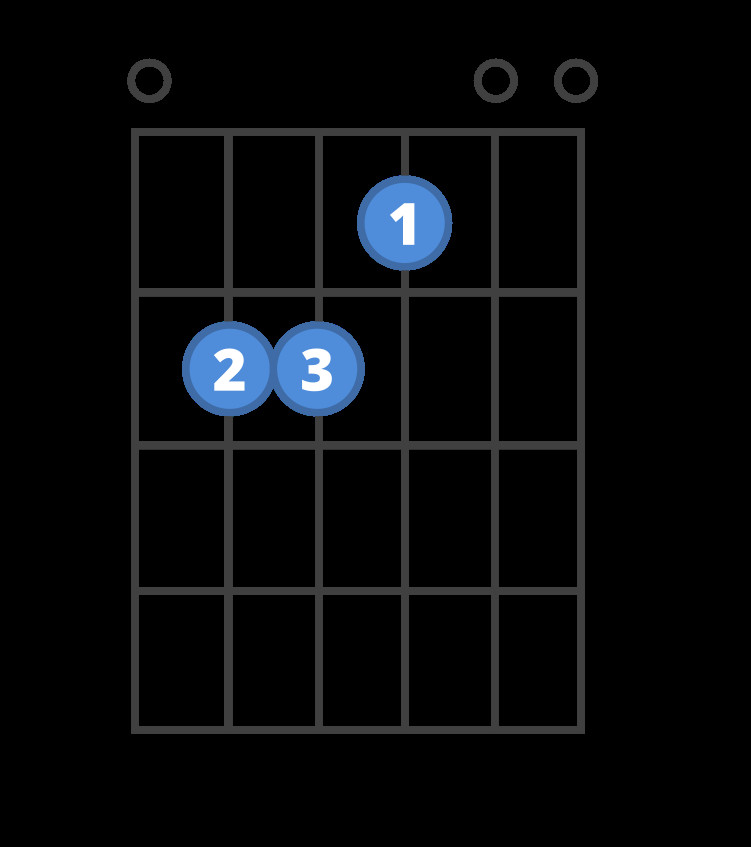 Chord diagram for the E guitar chord.
Chord diagram for the E guitar chord.
Notice that the E major chord diagram has an extra finger placed on the 3rd string, 1st fret. This single finger is what changes the chord from minor to major!
(Warning: Tiny Bit of Music Theory!)
In music theory terms, the difference lies in the third interval of the chord. In the E major chord, that extra finger raises the G note to a G#. This creates a major third interval, giving the chord its major quality. In the Em chord, we keep the natural G, creating a minor third interval, which gives us the minor sound. Don’t worry too much about the theory for now – just understand that a small change in finger position creates a significant change in the chord’s character.
Practice Tips to Master the Em Chord
Consistent practice is key to making the Em chord sound clean and becoming second nature. Here are some effective practice techniques:
The “On-Off Drill”
This is a fantastic exercise for memorizing chord shapes and building finger strength and dexterity.
- Form the Em Chord: Place your fingers in the Em chord position.
- Strum and Count: Strum the chord four times slowly and steadily, counting “1, 2, 3, 4” with each strum.
- Lift Fingers Off: Remove your fingers completely from the fretboard for four counts (“1, 2, 3, 4”).
- Repeat: Immediately place your fingers back into the Em chord shape and repeat the strumming and lifting cycle.
This drill helps your muscle memory learn the shape of the Em chord. The pauses between repetitions give you time to consciously reposition your fingers, reinforcing accuracy.
Switching Between Em and Other Chords
Once you’re comfortable with the On-Off Drill, challenge yourself by switching between Em and another chord. Good beginner chord pairings with Em include:
- Em and G Chord: Learn the G Major Chord
- Em and C Chord: Learn the C Major Chord
- Em and D Chord: Learn the D Major Chord
Example: Em to G Chord Switch Practice
- Play the Em chord for four strums.
- Quickly switch to the G chord and play it for four strums.
- Switch back to Em for four strums.
- Continue alternating between Em and G, focusing on smooth and fast transitions while maintaining a steady rhythm.
 Chord diagram for the Em guitar chord.
Chord diagram for the Em guitar chord.
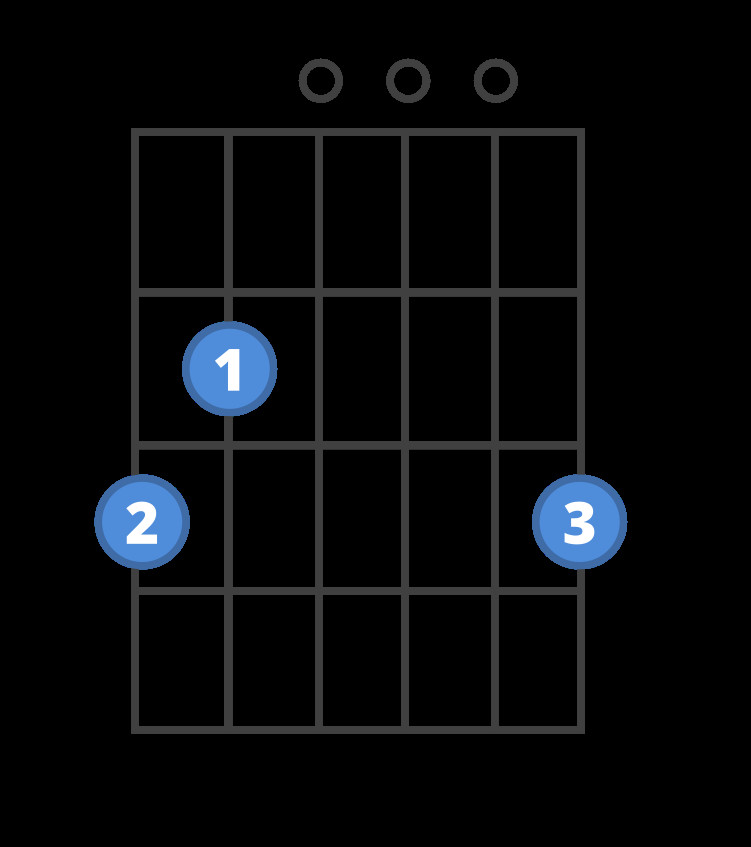 Chord diagram for the G guitar chord.
Chord diagram for the G guitar chord.
Practicing chord changes is crucial because playing songs involves moving smoothly between different chords. Start slowly and gradually increase your speed as your transitions become cleaner.
Play Along and Put Em Chord into Practice
The best way to solidify your Em chord skills is to play along with music! There are many songs that heavily feature the Em chord. Try practicing the Em chord along with these common chords in countless songs: G, D, and C.
Find backing tracks or chord diagrams online that use the Em, G, C, and D chord progression. Start slowly, focusing on clean chord changes and consistent rhythm. As you get comfortable, gradually increase the tempo.
Explore More Chords That Sound Great with E Minor
Once you’ve mastered the Em chord, you’ll open up a world of musical possibilities. Here are a few more chords that commonly accompany and sound excellent with the Em chord:
- G Major: How to Play G Major
- C Major: How to Play C Major
- D Major: How to Play D Major
- A Minor: How to Play A Minor
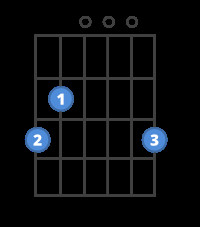 Chord diagram for the G guitar chord.
Chord diagram for the G guitar chord.
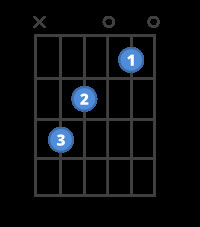 Chord diagram for the C guitar chord.
Chord diagram for the C guitar chord.
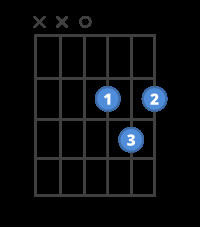 Chord diagram for the D guitar chord.
Chord diagram for the D guitar chord.
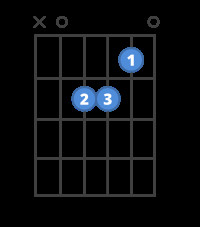 Chord diagram for the Am guitar chord.
Chord diagram for the Am guitar chord.
Expand Your Chord Vocabulary: Easy Minor Chords
If you enjoy the sound of minor chords and found Em easy to learn, explore these other beginner-friendly minor chords:
- A Minor (Am): How to Play A Minor
- D Minor (Dm): How to Play D Minor
 Chord diagram for the Am guitar chord.
Chord diagram for the Am guitar chord.
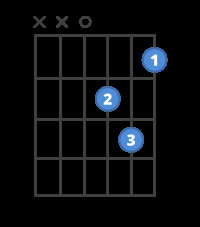 Chord diagram for the Dm guitar chord.
Chord diagram for the Dm guitar chord.
Take Your Guitar Journey Further with ChordBank
ChordBank offers a wealth of resources to support your guitar learning:
Explore Thousands of Guitar Chords »
Master Scales for Soloing and Improvisation »
Learn from Professional Guitar Instructors »
Utilize our Free Online Metronome »
Tune Your Guitar with our Online Tuner »
Discover Chords with the Reverse Chord Finder »
Jam with Backing Tracks in Every Key »
Save Your Favorite Chords for Practice »
Practice Effectively with AI Flashcards »
Ready to Play the Em Chord?
Start playing the Em chord with Chord Coach »
Watch a Video Lesson for the Em chord »
The Em chord is a fantastic starting point for any guitarist. Its simplicity and versatility make it a rewarding chord to learn early on. With consistent practice using the tips provided, you’ll be playing the Em chord smoothly and confidently in no time. Keep exploring, keep practicing, and enjoy the journey of learning guitar!
